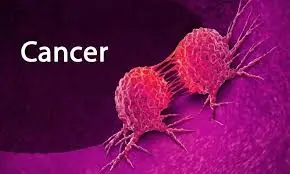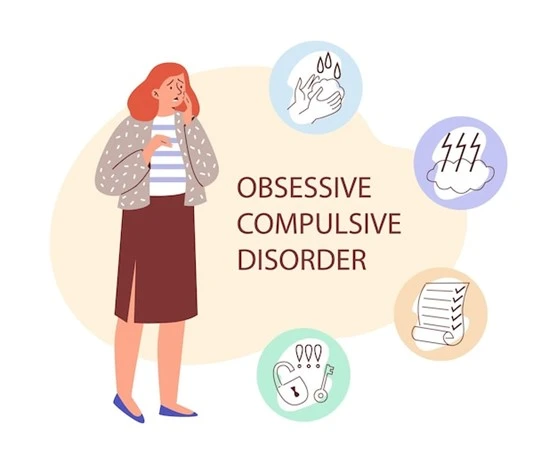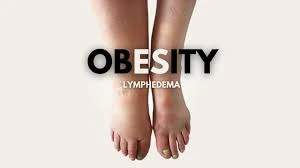Cancer
Cancer
Cancer is a condition where abnormal cells grow uncontrollably, potentially spreading to other parts of the body. It can affect various organs and tissues, with treatments including surgery, chemotherapy, and radiation.
Causes include genetic mutations, lifestyle factors, and environmental exposures. Early detection and treatment, such as surgery, chemotherapy, radiation, and targeted therapies, improve survival rates.
Introduction
Some of the body’s cells grow out of control and spread to other places of the body when they have cancer.
Since the human body is composed of billions of cells, cancer can begin practically anywhere. The body uses cell division to create new cells, which is how human cells normally develop and proliferate. Cells die when they age or sustain harm, and new cells replace them.
Occasionally, this organized mechanism malfunctions, causing damaged or Abnormal cells to proliferate and develop when they shouldn’t. These cells can create tissue masses called tumors, which can be benign or malignant.
Metastasis is the process by which cancerous tumors invade or expand into neighboring tissues and can migrate to other body parts to produce new cancers. Cancerous tumors are another name for malignant tumors. Blood malignancies like leukemias often do not develop into solid tumors, while many other types can.
Benign tumors do not infiltrate or spread to adjacent tissues. While malignant tumors might occasionally regrow after removal, benign ones often do not. But benign tumors can occasionally grow to be rather huge. Benign brain tumors are among those that can be fatal or produce severe symptoms.
What is Cancer?
Cancer is a broad category of disorders that have the characteristic of developing from healthy cells into malignant cells that proliferate and spread. Your cells receive instructions from your genes, such as when to begin and stop developing. Cancer cells disregard these directives, while healthy cells do.
In the United States, cancer ranks as the second most prevalent cause of death. However, death rates from cancer have decreased during the past 20 years. Innovative medicines and early diagnosis are curing cancer and extending the lives of those who have it.
The distinctions between normal and cancerous cells
There are several ways in which cancer cells are different from healthy ones. Cancer cells, for example:
- Expand without receiving cues to do so. Such signals are necessary for normal cells to proliferate.
- Disregard signals that would ordinarily instruct cells to cease dividing or to undergo apoptosis, also known as programmed cell death.
- Invade neighboring regions and spread to other bodily parts. The majority of normal cells do not travel throughout the body, and they cease to proliferate when they come into contact with other cells.
- Instruct blood vessels to expand in the direction of malignancies. These blood channels remove waste items from tumors and provide oxygen and nutrition to them.
- Avoid the immunological system. Normally, the immune system gets rid of damaged or abnormal cells.
- Deceive the immune system into allowing cancer cells to proliferate and survive. For example, some cancer cells persuade immune cells to defend the tumor rather than assault it.
- Develop several chromosomal abnormalities, including chromosome duplications and deletions. There are cancer cells that contain twice as many chromosomes as usual.
- Depend on distinct types of nutrients in contrast to healthy cells. Furthermore, certain cancer cells use nutrients differently than the majority of normal cells to produce energy. As a result, cancer cells can proliferate more rapidly.
Cancer cells frequently depend on these abnormal activities so much that they are unable to function normally without them. Utilizing this insight, researchers have created treatments that target the abnormal characteristics of cancer cells. Some cancer treatments, for instance, stop blood vessels from expanding in the direction of tumors, thereby depriving the tumor of nourishment.
What Causes Cancer to Develop?
Cancer is a hereditary illness, meaning that mutations in the genes that govern our cells’ growth and division are the cause of the cancer.
Genetic alterations that lead to cancer may occur because:
- Various mistakes happen when cells split.
- Various environmental contaminants, including compounds in tobacco smoke and UV radiation from the sun, can damage DNA. (You may read more about cancer causes and prevention in our section.)
- We inherited those from our parents.
Normally, damaged DNA cells are eliminated by the body before they develop into cancer. But as we age, our bodies’ capacity to do so declines. This is one of the factors contributing to the increased risk of cancer in later life.
Every cancer is caused by a different mix of genetic alterations. As the cancer spreads, further alterations will take place. Genetic alterations may vary among cells, even within the same tumor.
Cancer Types
Cancer comes in more than 100 varieties. They are classified by medical professionals based on the sort of tissue they impact and where they originate in your body. Three general cancer categories exist:
- Solid malignancies account for between 80% and 90% of all cancer cases, making them the most prevalent kind. Sarcoma, which develops in bone and connective tissues, and carcinoma, which manifests in epithelial tissue (such as your skin, breast, colon, and lungs), are examples of this.
- Blood cancers: These are tumors that originate in your lymphatic or blood cells. Leukemia, multiple myeloma, and lymphoma are a few examples.
- Mixed: Cancers including two subtypes or categories. Carcinosarcoma and adenosquamous carcinoma are two examples.
What is the rate of cancer?
Around the world, cancer is the second leading cause of mortality. Researchers predict that more than 611,000 Americans will lose their lives to cancer in 2024, and more than 2 million Americans will be diagnosed with the illness.
One in four people will get cancer at some point in their lives.
In the United States, the most prevalent types of cancer are:
- Breast cancer.
- Carcinoma of the lung.
- Breast cancer.
- Colorectal cancer.
- Malignancies of the blood.
Cancer may strike everyone, however, cases differ according to sex and race. The Annual Report on Cancer for 2022 states that the illness:
- Significantly more males than females are impacted.
- Has a greater impact on those over 60 than on anyone else.
- Has a greater impact on Black males than on those of other races.
- Disproportionately impacts American Indian and Alaska Native women compared to women of other races.
What signs and symptoms indicate cancer?
Each person experiences cancer symptoms differently. The kind and stage of your cancer will determine them.
The following are examples of general cancer symptoms:
- Tiredness
- A lump or thick spot beneath the skin
- Weight fluctuations, including inadvertent weight loss or gain
- Skin alterations include sores that do not go away, changes to moles that are already present, and yellowing, darkening, or redness of the skin.
- Alterations in the habits of the bladder or bowel
- Continuous coughing or breathing difficulties
- Swallowing difficulties
- An inability to speak clearly
- Continuous discomfort or indigestion after eating Prolonged, inexplicable joint or muscular pain
- Night sweats or persistent, inexplicable fevers
- Inexplicable bruising or bleeding
Cancer can occasionally result in extra symptoms that are particular to a certain organ. These could consist of:
- You have blood in your feces or urine.
- Modifications to a skin mole’s size, color, or form.
- Spitting up blood in my cough.
- Pimples or lumps that have appeared.
This is not a complete list. Additionally, you might not always have cancer if you experience these symptoms.
Cancer is an intricate illness. Symptoms vary according to kind. You can also be unaware that you have had cancer for years. In other cases, it might result in visibly noticeable symptoms that rapidly worsen.
If you see any changes in your body that persist for more than two weeks, it is a good idea to notify your healthcare physician.
What is the cause of cancer?
Cancer is an inherited condition. It does not always follow, however, that it is inherited. Mutations in genes that control cell activity cause it to occur. They produce abnormal cells, which eventually cause your body to malfunction by dividing and proliferating.
These cells form tumors, which are clusters of cancer. Via the lymphatic or circulatory systems, cancerous cells can separate from tumors and spread to other parts of your body. (Medicals refer to this as metastasis.)
For instance, you may have trouble breathing if a tumor in your breast spreads to your lungs. Uncontrollably multiplying abnormal blood cells are produced by your bone marrow in certain kinds of blood cancer. The abnormal cells eventually displace the healthy blood cells.
Medical experts estimate that between 5% and 10% of all malignancies are caused by inherited genetic abnormalities, or uncontrollable alterations. The most common cause of cancer is an acquired genetic mutation. This implies that it occurs throughout your lifetime. Numerous risk factors that raise your likelihood of getting cancer have been found by medical experts.
Risk Factor
The cause of cancer is not a single factor. Instead, several factors can make it more likely for you to get it, such as:
- Family background. You are at an increased risk of getting cancer if you have close biological relatives with the disease, such as parents, siblings, or grandparents.
- Consuming tobacco. An increased risk of lung, esophagus, pancreatic, and oral cancer is associated with tobacco use and e-cigarette use.
- Environmental elements. Cancer can develop after being exposed to environmental pollutants such as radon, insecticides, and asbestos.
- Undernourishment. Foods heavy in fat (obesity) or sugar can raise your chance of developing various cancers. Lack of physical activity also makes you more susceptible to illness.
- Hormonal treatment. Breast and uterine cancer risk may be elevated in women on hormone replacement treatment.
- Radiation exposure. The sun’s ultraviolet (UV) rays greatly raise your chance of getting skin cancer. Another danger factor may be excessive radiation treatment exposure.
How is a cancer diagnosis done?
Before diagnosing cancer, medical professionals perform a thorough physical examination. They will question you about your family’s medical history and your symptoms. Also, they could have to:
- Complete blood counts (CBCs), blood protein tests, and tumor marker tests are examples of blood testing for cancer.
- Imaging procedures such as iodine metaiodobenzylguanidine (MIGB), CT, MRI, and ultrasound.
- Biopsies can be nonsurgical (with a needle) or surgical (including an incision).
- Inherited cancers can be diagnosed and treated with genetic testing.
In what way is the stage of Cancer identified?
Healthcare professionals create a prognosis or predicted result and plan therapy using cancer staging systems.
Four phases are found in most malignancies. The size and location of the tumor are two of the many variables that affect the particular stage.
- Cancer in stages I–III (1-3), often known as early-stage or locally progressed, typically has spread to neighboring lymph nodes or grown straight into surrounding tissue.
- Metastatic cancer, often known as stage IV (4), is when cancer cells have progressed to other parts of your body via the lymphatic or circulatory systems.
What is the Treatment for Cancer?
Depending on your circumstances, medical professionals may employ a variety of therapies, occasionally combining them. Typical cancer therapies include:
- Chemotherapy uses drugs that target quickly dividing cells to eliminate malignant cells. Although there may be serious adverse effects, the medications can also aid in tumor shrinkage.
- Taking drugs that alter the way particular hormones function or prevent the body from producing them is known as hormone therapy. This is a typical strategy where hormones are important, like in the case of breast and prostate tumors.
- Immunotherapy stimulates the immune system to combat malignant cells by using drugs and other therapies.
- Cancer treatments can have several adverse consequences. Depending on the type of treatment you receive and how well your body handles it, these side effects might change. Inform your healthcare practitioner if you have any adverse effects while receiving cancer treatment. They might be able to suggest helpful drugs or treatments for you.
- In radiation therapy, malignant cells are killed by strong doses of radiation. A doctor could also suggest radiation therapy to lessen tumor-related symptoms or shrink a tumor before surgery.
- Particularly, stem cell transplants can help patients with blood-related malignancies like lymphoma or leukemia. Cells that have been damaged by radiation or chemotherapy, such as red or white blood cells, are removed. After strengthening the cells, lab technicians reintroduce them into the body.
- Surgery is frequently included in a patient’s treatment plan when they have a malignant tumor. A surgeon may also remove lymph nodes to stop or lessen the spread of the illness.
- Targeted treatments stop malignant cells from proliferating by acting inside of them. Moreover, they help strengthen the immune system. These treatments include monoclonal antibodies and small-molecule medications.
Can we avoid cancer?
Particularly when cancer is caused by unavoidable risk factors, it is not always preventable. However, you may reduce your risk by doing the following:
- avoiding tobacco use; keeping a healthy weight; eating a diet rich in fruits and vegetables; engaging in regular exercise; consuming alcohol in moderation or not at all;
- receiving the HPV and hepatitis B vaccinations if you are a member of a group that is advised to receive them;
- utilizing sun protection techniques or avoiding UV radiation exposure, which is mostly caused by exposure to the sun and artificial tanning technologies;
- guaranteeing the right and safe use of radiation in medical treatment (for both therapeutic and diagnostic reasons);
- lowering exposure to ionizing radiation at work; and lowering exposure to indoor and outdoor air pollution, including radon (a radioactive gas that is created when uranium naturally decays and can build up in homes, workplaces, and schools).
FAQs
How is cancer formed?
Gene mutations, or alterations in DNA, that take place in cells are what cause cancer. These mutations may occur spontaneously or as a result of exposure to environmental factors such as UV radiation or tobacco smoking.
What are the 7 symptoms of cancer?
Lumps: A thickening or lump in the breast or another area
Discharge or bleeding: Unusual bodily bleeding or discharge, including blood in the feces or pee
Sores: Sores that do not go away or that are becoming larger, more uncomfortable, or more prone to bleeding
Changes in bowel or bladder habits: Modifications to bowel or bladder habits
Indigestion After eating, persistent indigestion or pain
Hoarseness or coughing: A persistent cough or hoarse voice
Weight fluctuations: Inexplicable weight gain or decrease
How can we avoid cancer?
Making good lifestyle choices can lower your chance of developing cancer, even if there is no foolproof strategy to avoid it.
Nutrition
Consume a diet rich in fruits and vegetables that is well-balanced.
Select nutritious proteins and complete grains.
Steer clear of processed meat, red meat, and high-calorie meals and beverages.
Consume a multivitamin every day.
Sun protection Avoid tanning beds and wear sunscreen.
Avoid drinking too much alcohol.
Any level of alcohol use raises the risk of cancer.
Avoid smoking and using smokeless tobacco.
Smoking is the primary preventable risk factor for cancer death.
When to worry about cancer?
It is important to take any persistent lumps or swelling in your body. This covers any bumps in the breast, testicles, chest, stomach, groin, armpit, or neck.
How to fight cancer mentally?
Trying to control your emotions, being active, and finding ways to unwind might help you combat cancer emotionally. Friends, relatives, a counselor, or a spiritual adviser can also be a source of support.
References:
- Cancer. (2025, February 7). Cleveland Clinic. https://my.clevelandclinic.org/health/diseases/12194-cancer
- What is cancer? (2021, October 11). Cancer.gov. https://www.cancer.gov/about-cancer/understanding/what-is-cancer
- Cancer – Symptoms and causes. (n.d.). Mayo Clinic. https://www.mayoclinic.org/diseases-conditions/cancer/symptoms-causes/syc-20370588
- Crna, R. N. M. (2024, January 24). What to know about cancer. https://www.medicalnewstoday.com/articles/323648#treatments








3 Comments